|
Kochi Prefecture is located along the southern shore of Shikoku, the smallest
of the four main islands of Japan. Shikoku is separated from the other islands
by the Inland Sea and, before the completion of the huge Seto-Ohashi Bridge,
we used to take a ferry across the Sea. From the bridge one gets a spectacular
view of the Sea, the islands, and Shikoku. Sorry, but it’s still raining
here off and on, mostly on.
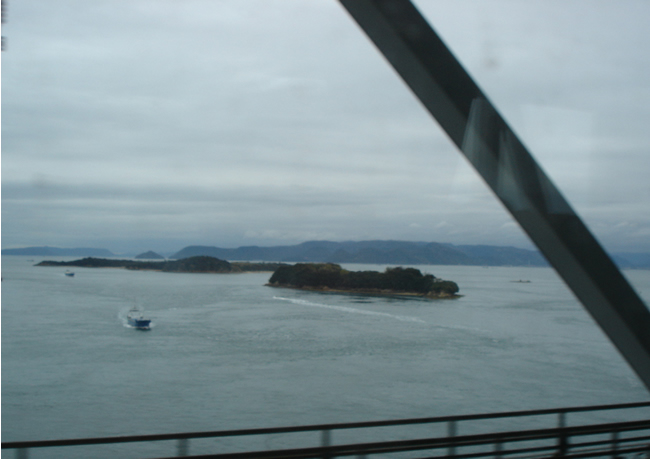
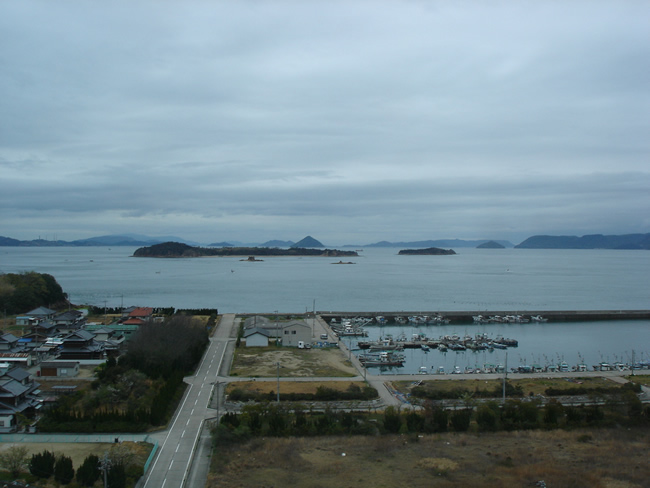
At the center of Shikoku are rugged mountains that separate
Kochi from the north side and, during the feudal are, potential invasion.
Miki’s (my wife) family is samurai and they can trace their family
back in Kochi for over 700 years. They were charged with defense of one
of the few passes that permit access to Kochi. Not this one but, you
get the idea.
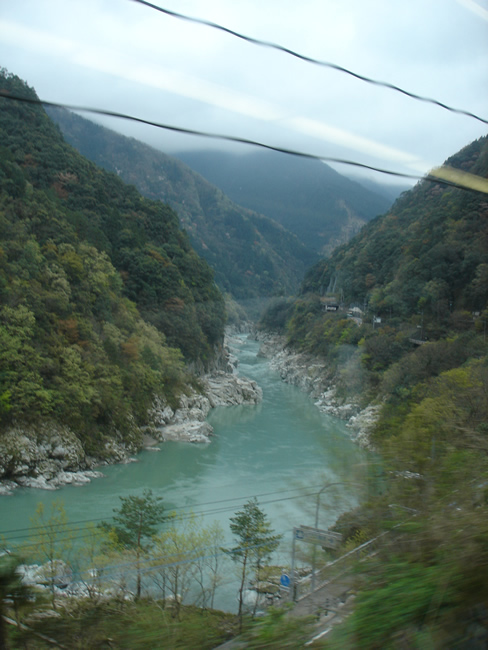
We did not have time to do the tourism thing and, besides, we’ve
been here many times before. Kochi has one of the few completely extant
castles from the 1600s and I encourage you to do a Google for it and
Kochi. An interesting feature of Kochi is the trolley system. Other Japanese
cities have trolleys but, Kochi has preserved the older cars and has
a few from Europe. We rode in one from Graz, Austria. The second picture
is of the trolley ceiling.
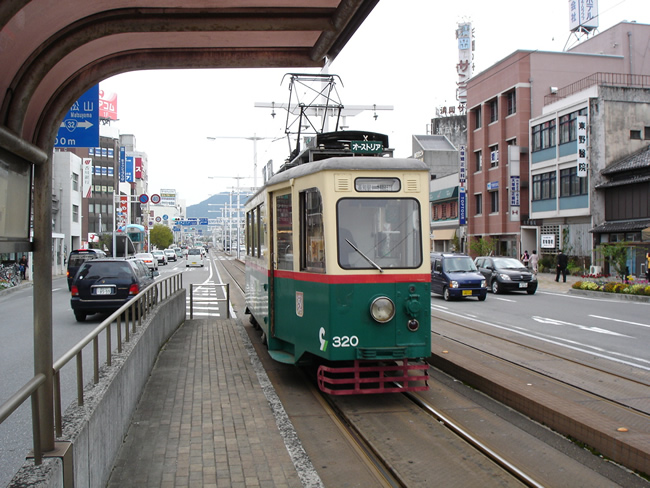
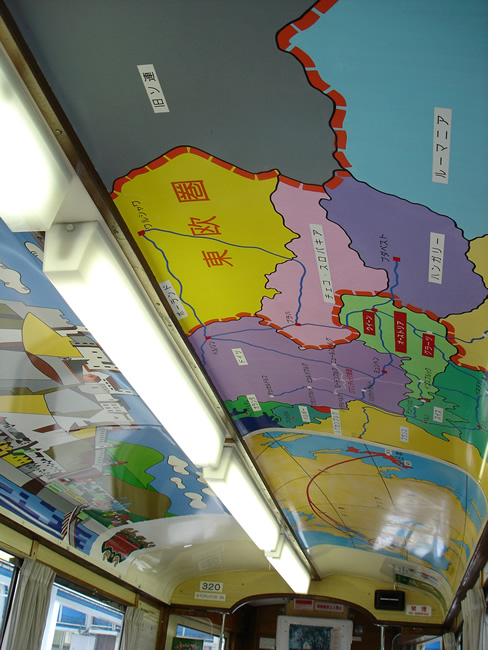
One of my great pen epiphanies occurred
a few years ago in Kochi. Almost ready to give
up on Japanese pens and bored, with time on
my hands, I asked Miki to look in the telephone
book to see if there were any mannenhitsu (fountain
pen) shops in the city. Without looking, she
said there were none. Eventually, with some
arm twisting, she looked and found this little
shop, Hakuado. Hakuado has been run by the
same woman owner since before World War II.
She must be in her mid-late eighties and is
still very active. At that time, several interesting
pens found their way home with me and I was
rehooked. I had to have more, and the rebirth
began.
Hakuado is not an easy shop to find. First,
you need to locate Obiyamachi, the large covered
shopping arcade.
Then, find the movie theatre. Normally the
entrance is through the side exit of the
theatre but, the theatre is under renovation
and access
from the rear alley is the only way there.
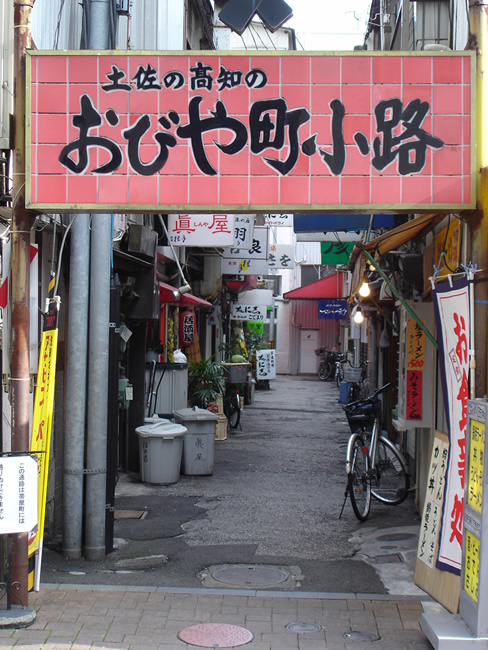
Walking to the end of the alley there is a
sign that says Hakuado in Japanese and a nearby
door. Go inside and you find yourself inside
a dress shop that opens to the mall. Do not
go through the shop. At the rear of the dress
shop is a stair you take to the third floor.
Before going to the shop call first and be
sure you have an interpreter. She is not open
all the time and goes out whenever she pleases.
You might need to leave a message. Thursdays
she is closed. It truly amazes me she has new
stock each time or, perhaps, it is stock she
never showed before. Several interesting pens
are now ensconced in my suitcase and bound
for America.
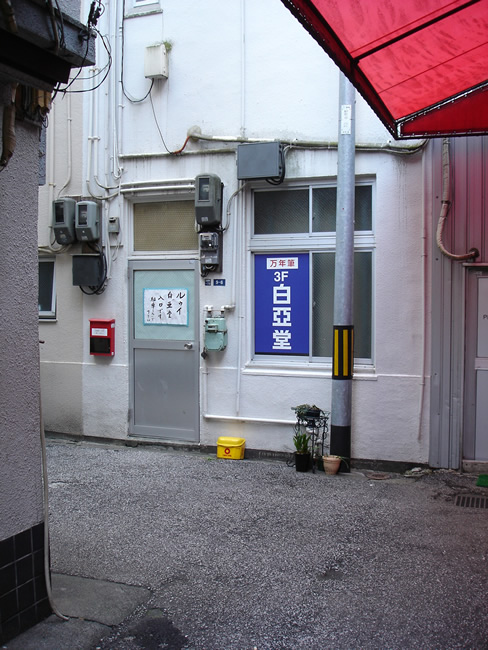
During our visit a new collector friend was made and encouraged to take this picture.
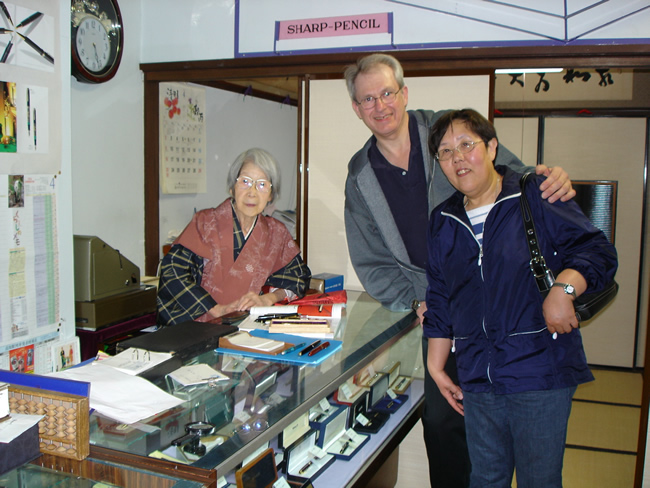
Some of the pens we tried out. Look very closely.
Yes, that is not a Sheaffer! Might be a Platinum!!!
And, that is not a Waterman.
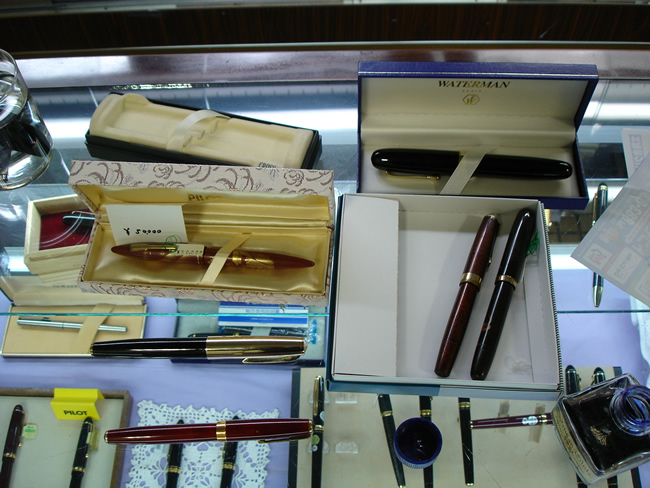
Neat little pen! Signed with red artists mark and in perfect condition.
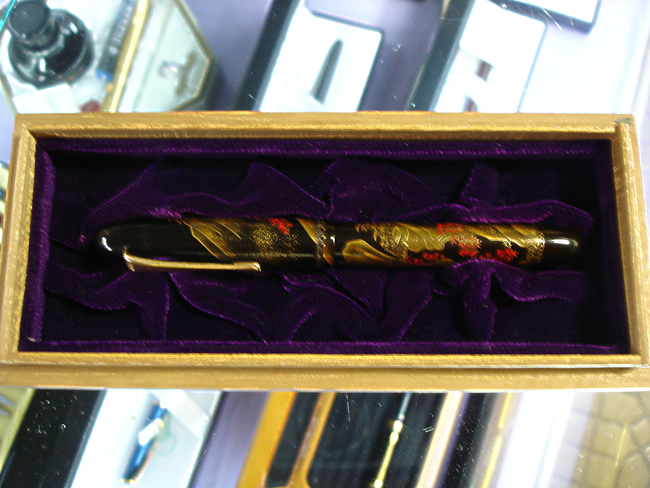
Later we had dinner at a restaurant named
Yana-ken that offered the most fantastic seafood.
When you enter you take off your shoes and
sit at low tables on the tatami-covered floor.
The walls are partly decorated with shikishi
(signed cards) from many famous actors, actresses,
and sport stars who have eaten here. Fish is
as close to live as possible and, if you are
lucky, you can see the chef kill, clean, and
fillet your dinner. One of the specialties
of Kochi prefecture is tataki, smoked bonito
that is eaten with scallions, onions, garlic
and sauce. I took this shot in a hurry as it
was disappearing before my eyes and had to
shoo away the others.
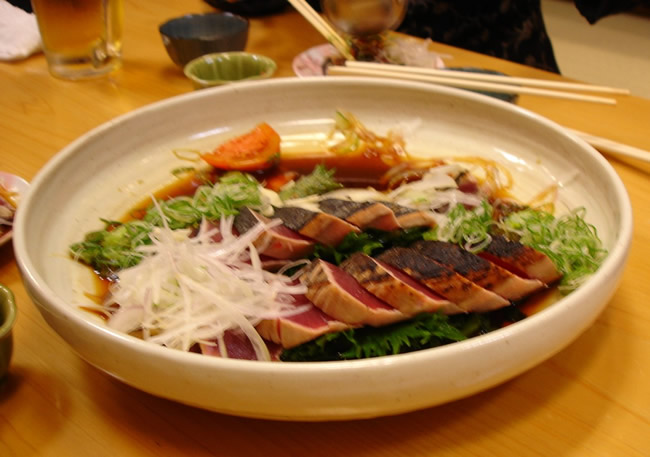
You can also order fish grilled at your table
on a hibachi. The things on the right are two
halves of a huge live prawn, recently halved.
It will move around for a few minutes before
it finally dies, or is eaten.
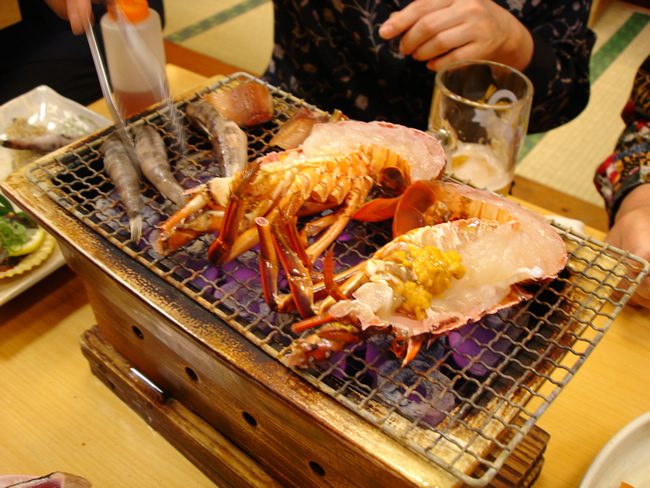
We arrived in Fukui to discover the hotel
we selected wasn’t what we thought it
to be. Not even internet access despite what
they represented online. There’s not
much in pens in the city, or anything else.
A bit further down the coast is an important
penmaker in Tottori and another in Matsue.
Maybe, next year.
Eiheiji Temple and Tojimbo were unexpected
pleasures despite the continual on and off
rain. Eiheiji is a 700 year old temple of the
Zen school of Buddhism and it is huge. Set
in the mountains in a grove of cedars over
100 foot tall, there are over seventy buildings
of which about ten are open to tour. If you
have ever had a fantasy of Japan, this might
come close to it. It’s a trek getting
there but it, and the scenery were worth it.
In hindsight it is a good place to contemplate
meaning in life and our role as human beings.
If you think you see snow in some of the pictures,
it is real. This is the mountains.
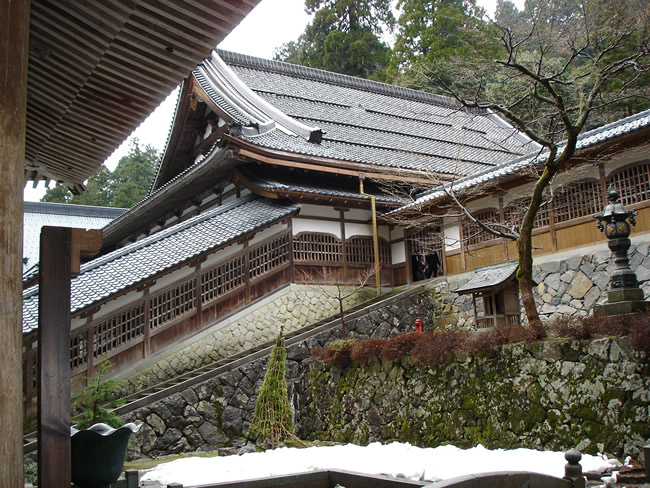
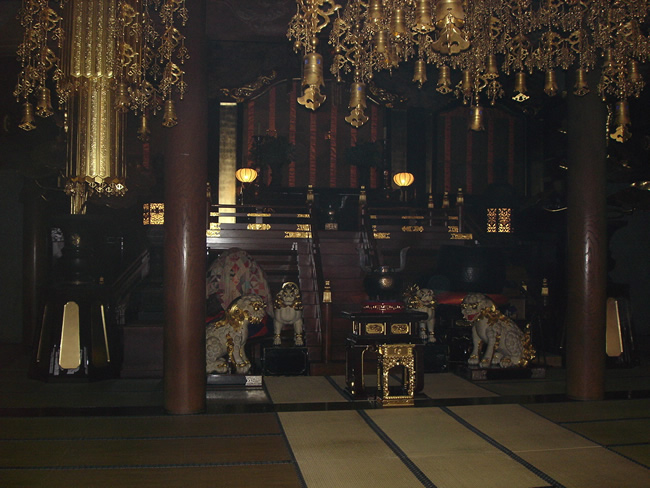
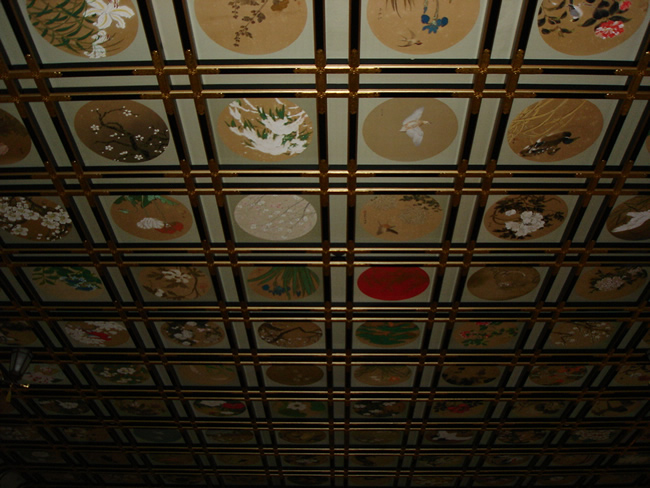
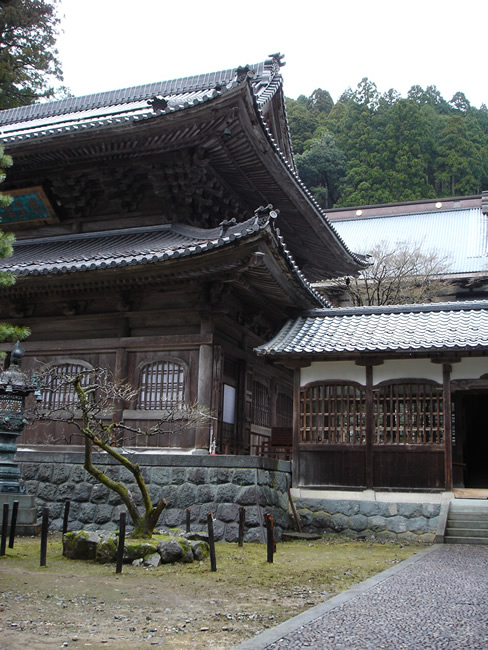
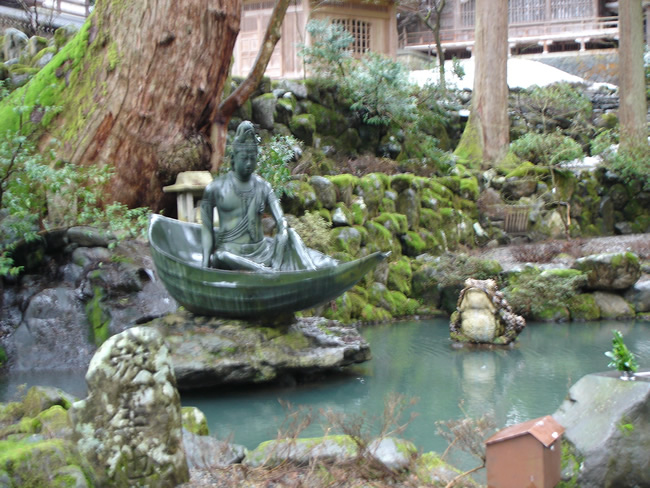
From Eiheiji, you can take an hour
and half bus ride to the coast and Tojimbo.
Good chance for some shuteye. Tojimbo is a
large natural outcropping of rocks pushed upward
by, I think, the tectonic plates. Looking closely
you can see that some of the rocks have a hexagonal
shape reflecting their molecular pattern.
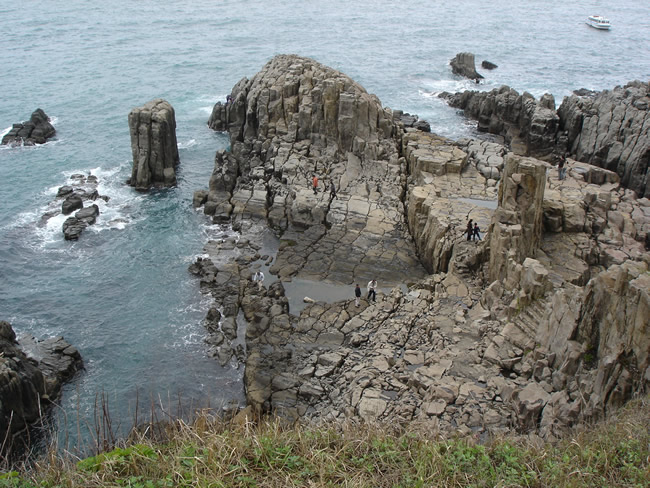
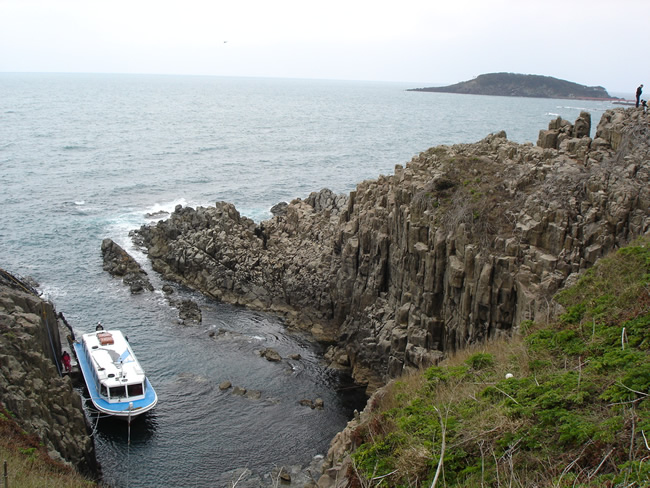
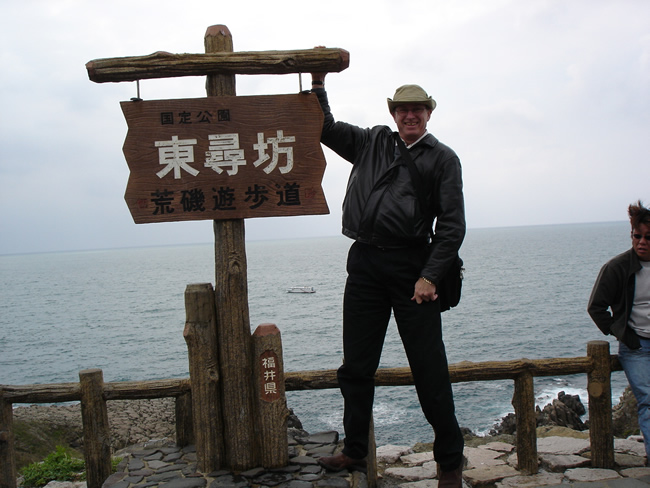
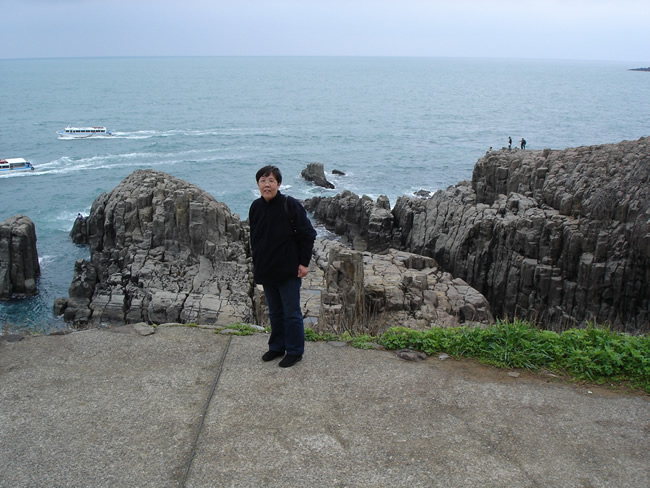
Fukui and Kanazawa are part of the
Echizan area of Japan and that means seafood
and, especially crab. Along the coast crab
and squid are commonly seen foods.
This was my lunch of roasted squid (upper left)
and kani donburi (crab over rice and egg).
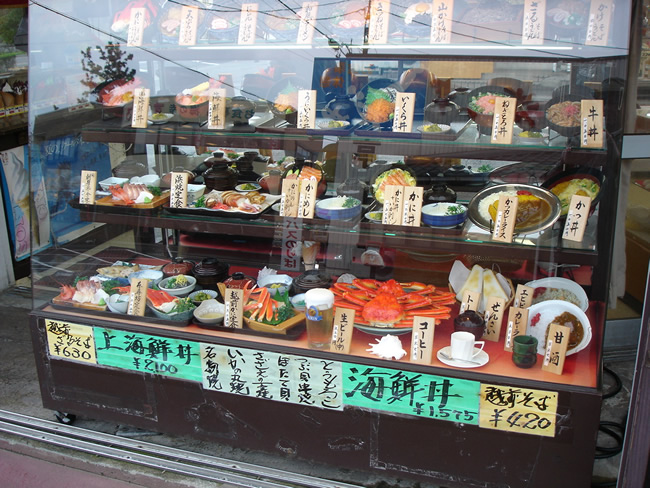
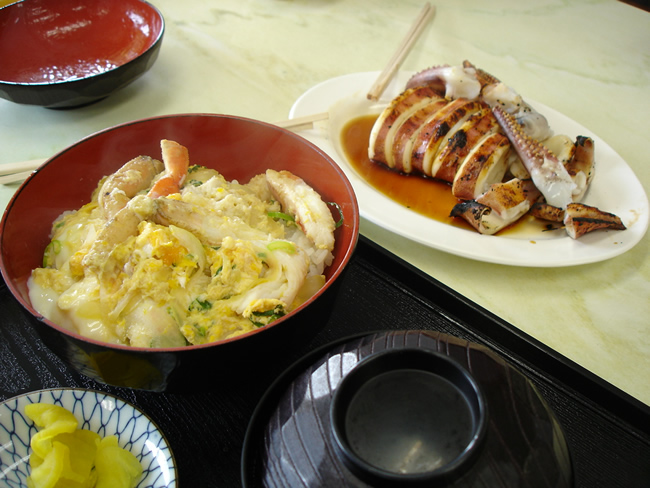
We’re in Kanazawa today. The
first night the hotel blew our room reservation
and we didn’t have computer access. They
gave us another room today and here we are.
Regarding access, should you have a wi-fi card,
be sure it can be used in Japan. There are
many places with free hotspots. In hotels most
access is by Air Terminal and you need to make
this known with your reservation. It is free
but, there may be a limited number of available
units. Also, the three prong plug found in
America will not work on Japanese outlets.
Unless you already have a converter, try getting
an extension plug (allows three electrical
devices to be plugged into one outlet) available
at many shops for Y100 in Japan. Your computer
will work without any problem.
One of the highlights of our trip was the visit
to Wajima. There’s no train there anymore
and the easiest way to get there is to take
the first bus out from Kanazawa railroad station
in the morning and return in the evening. The
Noto Peninsula, where Wajima is located, is
worth much more than a day trip and, if you
can, rent a car to spend a day or two touring
the area at your leisure.
Next, the real scoop on Wajima and makie.
|